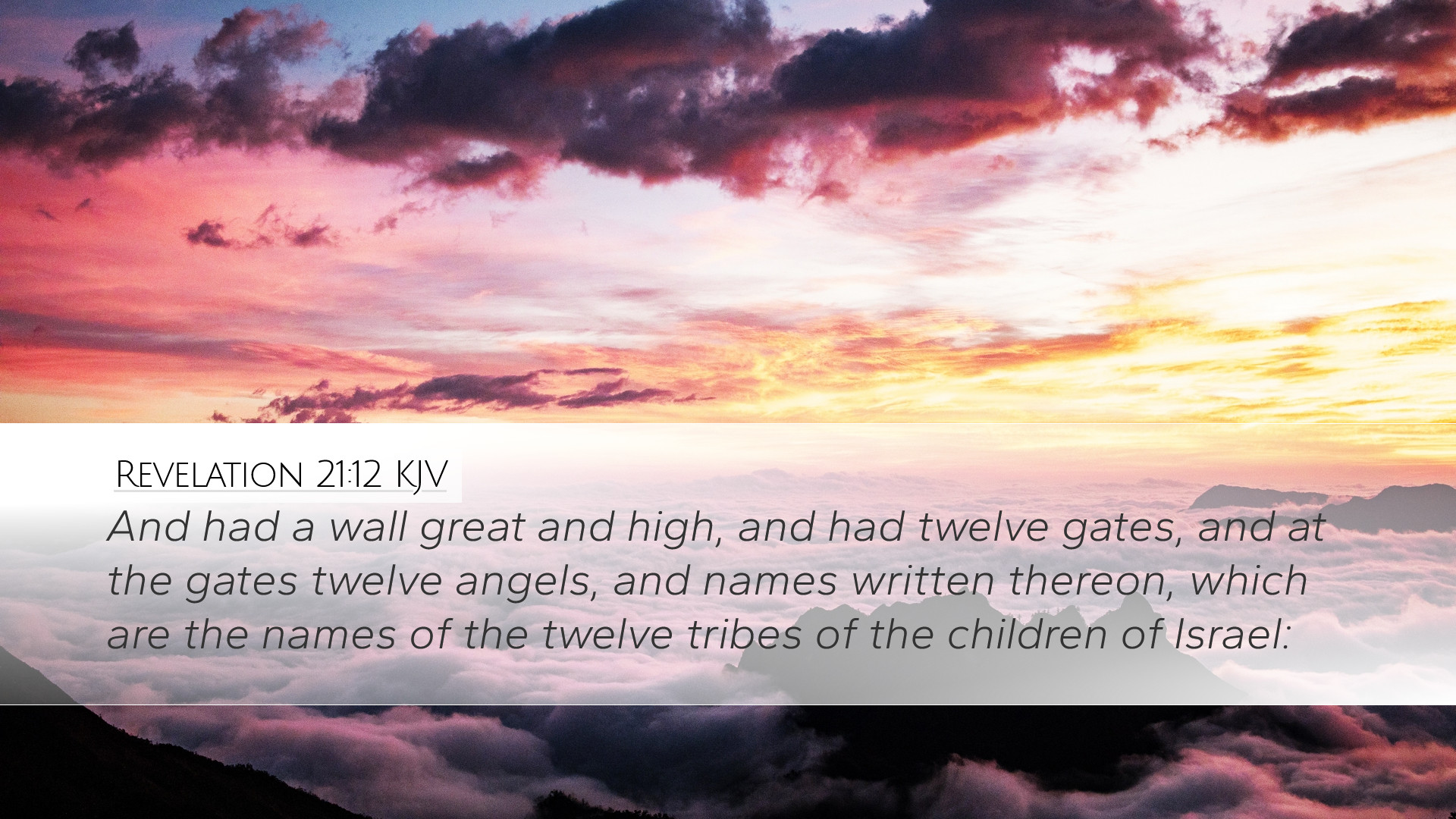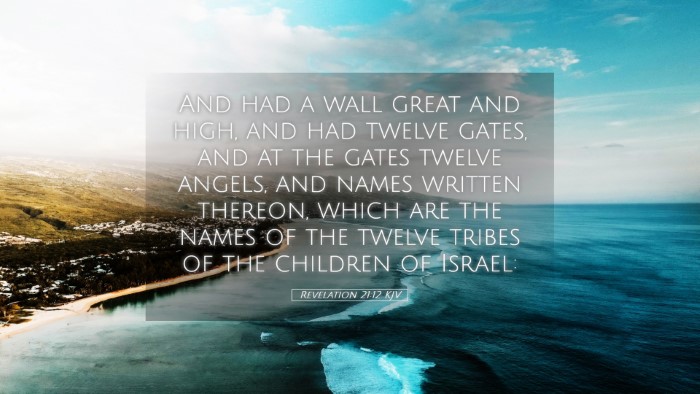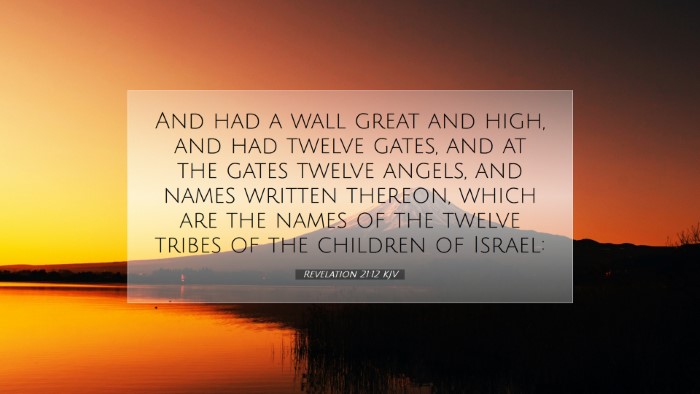Overview and Significance
This verse is part of the vision of the New Jerusalem, representing the ultimate fulfillment of God's promise to His people. It emphasizes the beauty and glory of the new creation, highlighting God's desire for His people to dwell with Him eternally. The imagery of a high wall and gates signifies both protection and access, showing that the New Jerusalem is a place of security and divine presence.
Insights from Commentaries
Matthew Henry's Commentary
Matthew Henry notes that the wall surrounding the New Jerusalem is described as "great and high," symbolizing its strength and the protection it offers. The twelve gates represent the accessibility of the city to all the tribes of Israel, indicating that God's people from all generations are welcomed into His presence.
Henry emphasizes that the mention of angels at each gate signifies the divine guardianship and the holiness of the entrance to the city. The walls depict the idea of safety, drawing a parallel to the ancient cities of refuge in the Old Testament where people could seek sanctuary.
Albert Barnes' Notes on the Bible
Albert Barnes elaborates on the significance of the twelve gates, explaining that they not only provide entry but also symbolize the completeness of God's covenant with Israel. Each gate is named after one of the twelve tribes, showcasing God's faithfulness to His promises to His chosen people.
Barnes reflects on the "twelve angels" at the gates as messengers of God, reinforcing the security of the city and the divine authority that governs it. He interprets the gates as a means of inviting believers into a community that transcends earthly limitations and is marked by heavenly glory.
Adam Clarke's Commentary
Adam Clarke provides a detailed examination of the symbolism within Revelation 21:12. He notes that the structure of the New Jerusalem, including its wall and gates, illustrates the distinction between the holy and the unholy. The gates marked with the names of the tribes serve as a reminder of the Israelite heritage and God’s unchanging covenant.
Clarke stresses that the design of the city, inclusive of the twelve gates, exemplifies the inclusivity of God's grace, whereby not only Israel but all nations can enter through faith in Christ. He also connects this imagery to the prophetic messages of the Old Testament, emphasizing the fulfillment of God’s promises through the establishment of His eternal kingdom.
Theological Implications
The verse embodies several crucial theological themes:
- Covenant Theology: The reference to the twelve tribes signifies God's ongoing relationship with Israel, affirming that His covenant is not abolished but rather fulfilled in Christ.
- Divine Security: The high walls symbolize divine protection and the idea that the New Jerusalem is a place of refuge for believers, free from sin and suffering.
- Inclusivity of Salvation: The doors of the city are open to all tribes, pointing to the universal offer of the Gospel, where all who believe can find entrance.
Practical Applications for Believers
This passage serves as encouragement for believers today:
- Hope in God's Promises: The vivid imagery provides hope for the future, reminding believers that their faithfulness will be rewarded in the eternal state.
- Assurance of Salvation: Knowing that the gates are named after the tribes reassures believers of their identity as God's people and their acceptance in His kingdom.
- Emphasis on Community: The communal aspect of the New Jerusalem highlights the significance of the Church today, encouraging unity among believers as we collectively await our eternal home.
Conclusion
Revelation 21:12 serves as a powerful reminder of God's sovereignty, His faithfulness to His covenant, and the beautiful reality that awaits believers. The depiction of the New Jerusalem encourages pastors, students, theologians, and scholars to embrace the hope and assurance provided in Scripture. As we study this verse, we are reminded of our identity in Christ and the promise of eternal communion with God.


